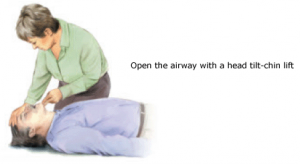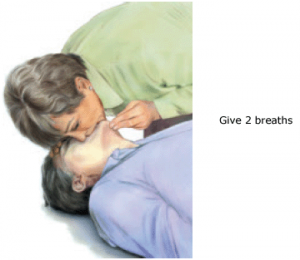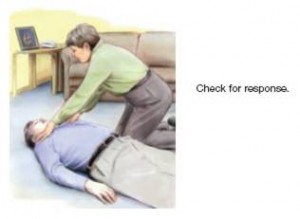Knowing how to accurately perform CPR, which is also known as Cardiopulmonary Resuscitation, is not only essential but it is also life saving. According to the American Heart Association, “about 92 percent of sudden cardiac arrest victims die before reaching the hospital, but statistics prove that if more people knew CPR, more lives could be saved. Immediate CPR can double, or even triple, a victim’s chance of survival.” If you’re not sure of what a cardiac arrest is, it occurs when your heart stops beating and the blood will stop circulating around your body.
The causes of a cardiac arrest can include the following:
- Disturbance in the heart rhythm
- Drugs or poisoning
- Heart attach or heart disease
- Blood loss
Do you know how to give someone CPR? Regardless of whether or not you do or don’t, I highly recommend reviewing the below information. You can save a loved one’s life by accurately administering CPR on them if ever needed. Please note that this article includes information on how to administer CPR on adults, NOT children. There is a different procedure on administering CPR on children, which we will discuss at a later time.
Compressions: considered to be one of the most important parts of adult CPR. When you perform compressions on someone, you pump blood to the brain and heart.
Steps to performing compression:
1. Kneel at the victim’s side
2. Make sure the victim is lying on his back on a firm and flat surface. Carefully roll the victim on his back if the victim is face down.
3. Move or remove the clothes from the front of the chest because the clothing will get in the way of doing compressions
4. Put the heel of one hand on the center of the victim’s chest between the nipples. Please refer to Figure A below. Put the heel of your other hand on top of the first hand. Please refer to Figure B below.
It is extremely important to keep the following tips in mind when performing CPR:
- Push hard and push fast
- Push at a rate of 100 times a minute
- After each compression, release pressure on the chest to let it come back to its normal position.
When performing CPR, you have to give the victim breaths that make the chest rise. Before giving breaths, you have to open the airway with the head tilt chin lift.
Steps in performing the head tilt chin lift:
1. Tilt the head by pushing back on the forehead
2. Lift the chin by putting your fingers on the bony part
3. Lift the chin to move the jaw forward
Giving breaths: your breaths give oxygen to someone who can’t breathe on his or her own.
Steps for giving breaths:
1. Hold the airway open with a head tilt chin lift
2. Pinch the nose closed
3. Take a normal breath and cover the victim’s mouth with your mouth, creating an airtight seal.
4. Give 2 breaths (blow for 1 second each). Watch the chest rise as you give each breath.
Compression and Breaths: when you are performing CPR, you should do sets of 30 compressions and 2 breaths. Try to not interrupt chest compressions for more than a few seconds.
Check for response: you should check to see if the victim is responding before giving CPR. Kneel at the victim’s side and tap the victim and shout “Are you OK?”
Check Breathing: Once you have checked the victim for a response, you must then check to see if the victim is breathing normally. Make sure that the victim is lying face up on a firm and flat surface.
Steps for checking the breathing:
1. Open the victim’s airway with a head tilt chin lift
2. Check to see if the victim is breathing normally (takes at least 5 seconds but no more than 10 seconds).
- Put your ear next to the victim’s mouth and nose
- Look to see if the chest rises
- Listen for breaths
- Feel for breaths on your cheek.
Special Situations
1. Gasping vs. Breathing: In the next few minutes after sudden cardiac arrest, a victim may only gaps. Keep in mind that gasping is NOT breathing. If the victim gasps when you open the airway to check breathing, continue the CPR steps. The victim is likely to need all of the steps.
2. Side Position: If the victim is breathing normally but is not responding, roll the victim to his side and wait for trained help to take over. If the victim stops moving again, you’ll need to start the steps of CPR from the beginning.




